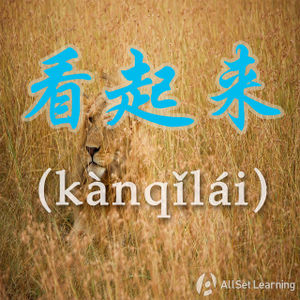Difference between revisions of "Appearance with "kanqilai""
| Line 3: | Line 3: | ||
One of the most common ways to express "it looks like" is to use 看起来 (kànqǐlái). This is what we would use if we wanted to express something like, "she looks tired." | One of the most common ways to express "it looks like" is to use 看起来 (kànqǐlái). This is what we would use if we wanted to express something like, "she looks tired." | ||
| − | == Structure == | + | == Basic Pattern == |
| + | |||
| + | === Structure === | ||
Just put 看起来 after the subject, as follows: | Just put 看起来 after the subject, as follows: | ||
<div class="jiegou"> | <div class="jiegou"> | ||
| − | + | Subj. + 看起来 + Predicate | |
| − | Subj. + 看起来 + | ||
| − | |||
</div> | </div> | ||
| − | + | === Examples === | |
| − | |||
| − | == Examples == | ||
<div class="liju"> | <div class="liju"> | ||
| Line 27: | Line 25: | ||
</div> | </div> | ||
| − | ==See also== | + | == See also == |
* [[Result complement "-qilai"]] | * [[Result complement "-qilai"]] | ||
Revision as of 07:31, 21 September 2017
-
Level
-
Similar to
-
Used for
-
Keywords
One of the most common ways to express "it looks like" is to use 看起来 (kànqǐlái). This is what we would use if we wanted to express something like, "she looks tired."
Contents
Basic Pattern
Structure
Just put 看起来 after the subject, as follows:
Subj. + 看起来 + Predicate
Examples
- 蛋糕 看 起来 很 好吃 。This cake looks really tasty.
- 这 家 餐厅 看 起来 不错。This restaurant looks good.
- 你 男朋友 看 起来 很 成熟 。Your boyfriend seems very mature.
- 老板 看 起来 有点 不 高兴 。The boss seems a little unhappy.
- 你 的 新 发型 和 原来 的 发型 看 起来 差不多 。Your new haircut looks pretty much the same with the old one.
See also
- Result complement "-qilai"
- "It seems" with "haoxiang"
- Further uses of resultative complement "qilai"
Sources and further reading
Books
- Integrated Chinese: Level 2, Part 1 (pp. 241-2) →buy
Websites
Videos
- Yoyo Chinese: "You look Pretty"



